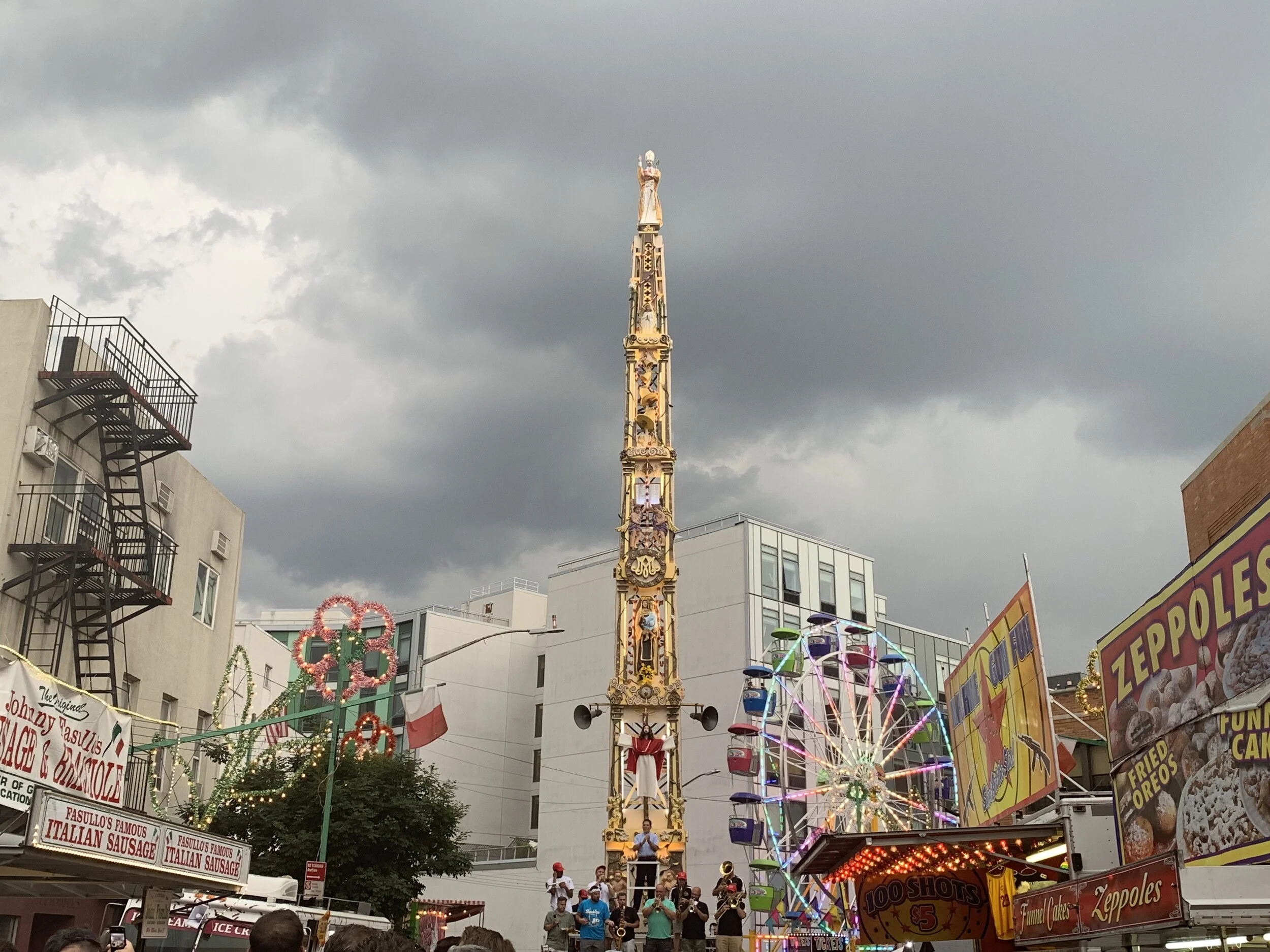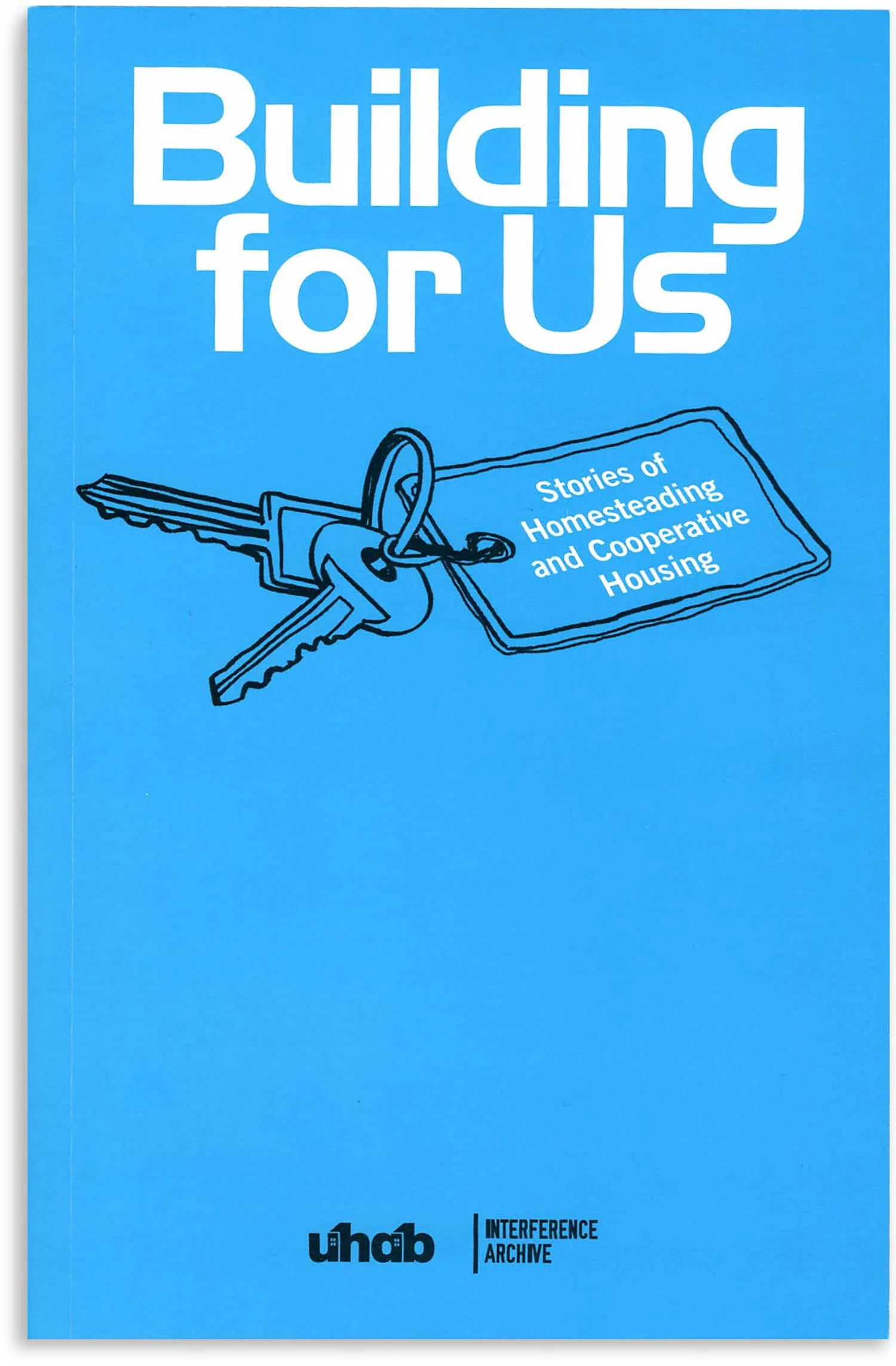Authentic Survivors: Religion and Gentrification in Williamsburg, Brooklyn
By Alyssa Maldonado-Estrada
Every July in Williamsburg, Brooklyn, the Italian American Catholic community celebrates its patron saints in spectacular fashion. During the annual Feast of Our Lady of Mount Carmel and San Paolino di Nola, men in the community perform the Dance of the Giglio, a ritual that has been celebrated in Brooklyn since 1903. Hundreds of men lift the seventy-foot-tall, four-ton tower, decorated with baroque angels, saints, and arches, through the streets in honor of Saint Paulinus (San Paolino), the patron saint of Nola, Italy.
Read More“Little Pittsburgh”: Creating an Industrialized Landscape in Hunts Point
By Sam Hege
Since the 1950s, New York City has relied on the South Bronx to handle the vital and taxing components of its processing and distribution infrastructures. This strategy began with the decision to relocate the Terminal Market from downtown Manhattan to the Hunts Point peninsula, and has since been used to justify the siting of waste transfer stations, prisons, and industrial processing facilities. This consolidation of waste and congestion to the South Bronx supported the emergence of Manhattan as a tourist destination and financial capital, embodied by the redevelopment of the Manhattan market space as part of the World Trade Center project.
Read More“My Colored House is on Fire”: Children, Housing, and the Architecture of Black Charity in San Juan Hill
By Jessica Larson
Following their displacement from the Tenderloin in the early 1900s, Manhattan’s largest Black population moved northward and sought to rebuild their community’s infrastructure in San Juan Hill, an area bounded by 59th Street to the south, 65th Street to the north, Amsterdam Avenue to east, and West End Avenue to the west. Black reformers — the majority of whom were women — worked to construct a neighborhood that offered to its residents missing social welfare services.
Read MorePushing Back: Interview with Ariella Rotramel
Interviewed by Hongdeng Gao
Today on the blog, Gotham editor, Hongdeng Gao interviews Ariella Rotramel, author of Pushing Back: Women of Color–Led Grassroots Activism in New York City. The book explores women of color’s grassroots leadership in organizations that are not singularly identified with feminism. Centered in New York City, Pushing Back brings an intersectional perspective to communities of color as it addresses injustices tied to domestic work, housing, and environmental policies and practices.
Read More“The Colored People Have Dispersed”:
Race, Space, and Schooling in Late 19th-Century Brooklyn
By Judith Kafka and Cici Matheny
“The doing away with the distinctively colored schools and … bringing about mixed classes,” wrote the Brooklyn Daily Eagle in September of 1899, “has done more toward the education of the race than any other individual effort.” Brooklyn’s Board of Education had officially ended racial segregation in schooling in 1883, by requiring all district schools to admit any student living within their enrollment boundaries.
Read MoreWhose City? Fueling the Gentrification Machine through BID Urbanism
By Susanna Schaller
On September 16, 2016 Crains’ New York Business ran an article titled, “Shaping a Neighborhood's Destiny from the Shadows.” The article highlighted the work of business improvement districts (BIDs) in New York City. In the context of federal policies that had systematically drawn the life out of central cities followed by federal retrenchment, urban visionaries and the downtown BIDs they led were framed by bipartisan consensus as savior organizations.
Read MoreParkchester: An Interview with Jeffrey S. Gurock
Interviewed by Katie Uva
Today on the blog, editor Katie Uva talks to Jeffrey Gurock about his recent book, Parkchester: A Bronx Tale of Race and Ethnicity. In it, Gurock combines his personal experience growing up in Parkchester with research into the history of this planned community in the Bronx, and offers an interpretation both of Parkchester’s uniqueness and what it reveals about the broader city.
Read MoreSaving America's Cities: Ed Logue and the Struggle to Renew Urban America in the Suburban Age
Reviewed by Daniel Cumming
In the pantheon of towering urban developers in the post-WWII era, few figures have shaped our collective consciousness more than Robert Moses and Jane Jacobs. Whether you read Robert Caro’s The Powerbroker or Jacob’s The Death and Life of Great American Cities, whether you lived in the freeway path cleaved for the Cross Bronx Expressway or kept “eyes on the street” in Greenwich Village, most New Yorkers have been in some way exposed to the competing ideologies overpower and place embodied by Moses and Jacobs. You may have even picked a side in the morality tale that has become standard fare in accounts of urban renewal.
Read MoreBuilding for Us: Stories of Homesteading and Cooperative Housing
Reviewed by Katie Uva
New York City is in the throes of a housing crisis. Soaring housing costs and stagnant wages have left increasing numbers of New Yorkers rent-burdened, and have moved the possibility of homeownership even farther out of reach in a city that has always been dominated by renters. Pro-growth voices argue that rezoning and incentivizing private developers to do more building would open up supply and alleviate the crisis; progressives resist that narrative and see such ideas as furthering the city’s capitulation to the private sector and worsening the tension between housing as an asset versus housing as a right. Conflicts abound about how to create affordable housing, how to define affordable housing, and how to sustain affordable housing.
Read More






